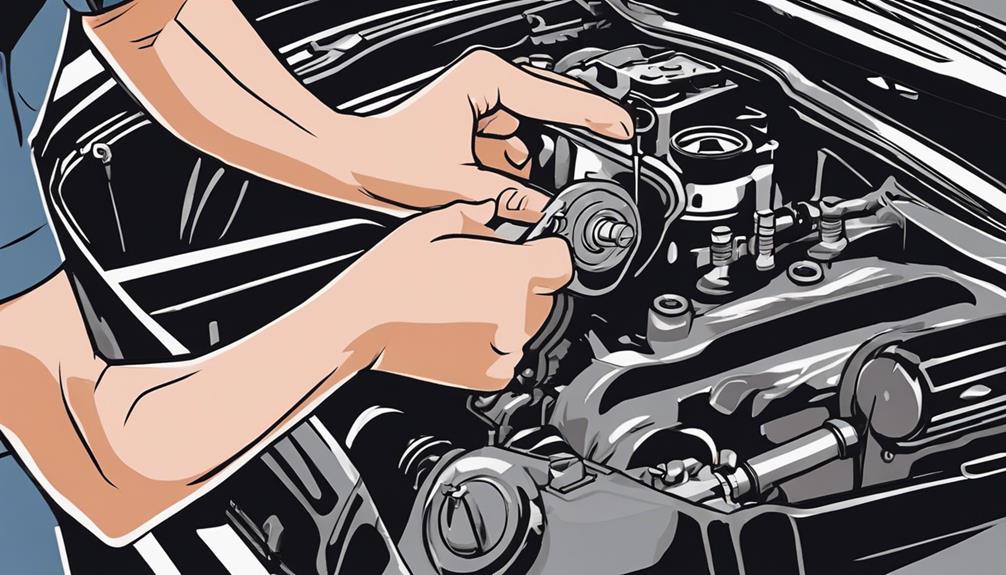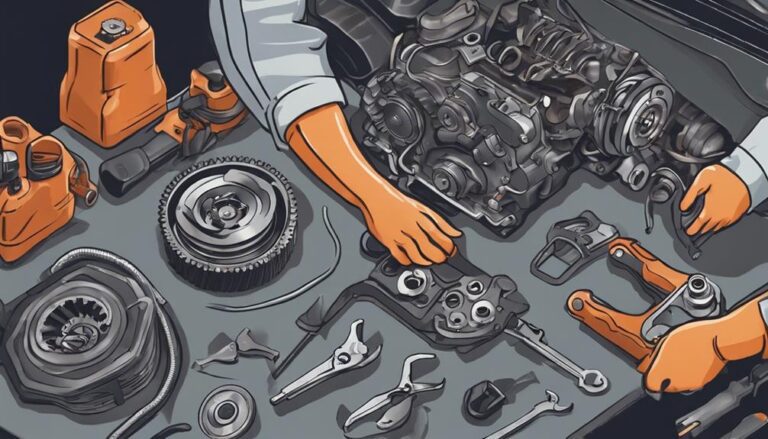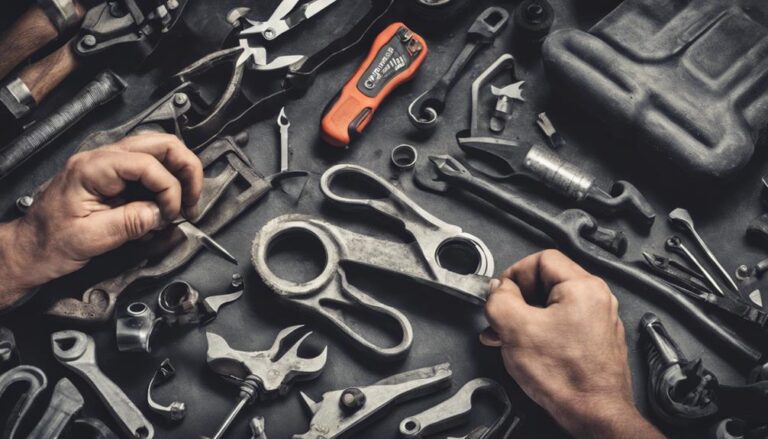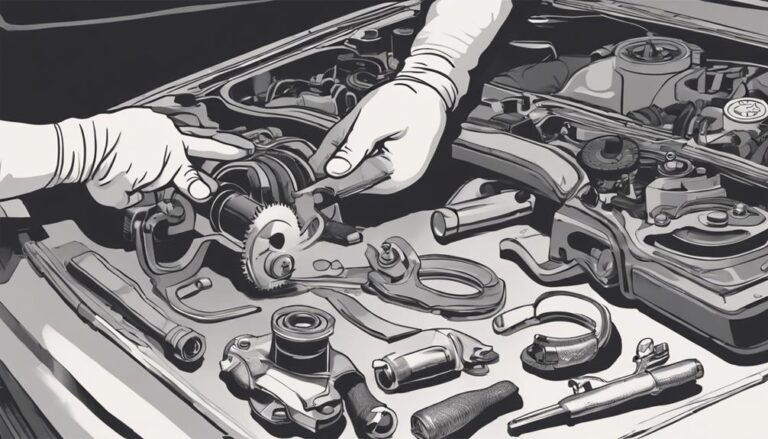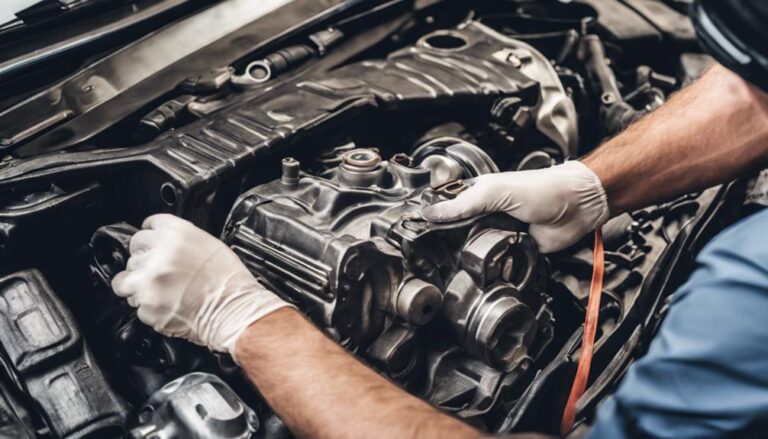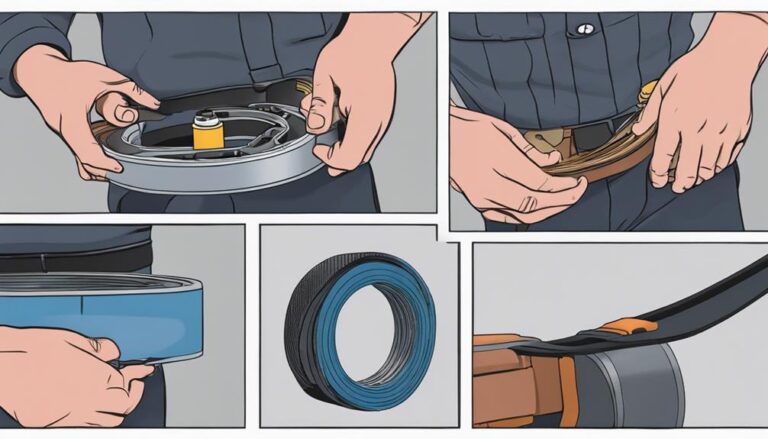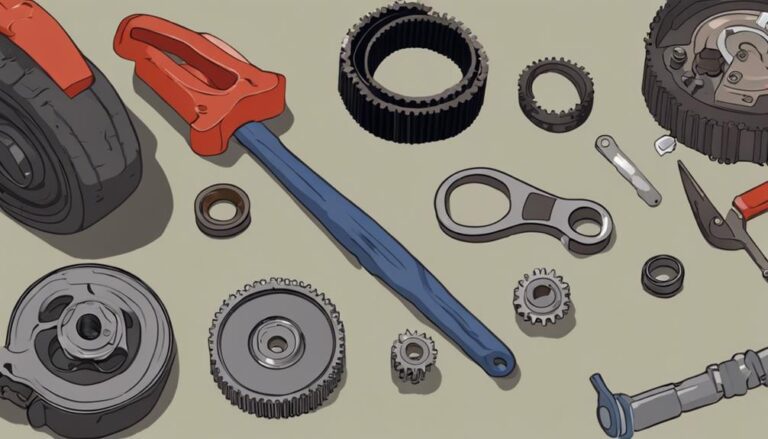Why Adjusting Drive Belt Tensioner Is Important
When it comes to your vehicle's maintenance, ensuring the drive belt tensioner is properly adjusted is like hitting the bullseye. The drive belt tensioner plays a critical role in the performance of various components in your car, yet its adjustment is often overlooked.
This seemingly small adjustment can have a significant impact on the overall functionality of your vehicle. Curious to uncover more about why this adjustment is so important?
Key Takeaways
- Proper tension ensures peak engine performance and longevity
- Incorrect adjustment leads to premature wear and potential damage
- Safety precautions are vital during tensioner adjustment for accidents prevention
- Regular maintenance schedules prevent belt and component wear, enhancing overall efficiency
Importance of Drive Belt Tensioner Adjustment
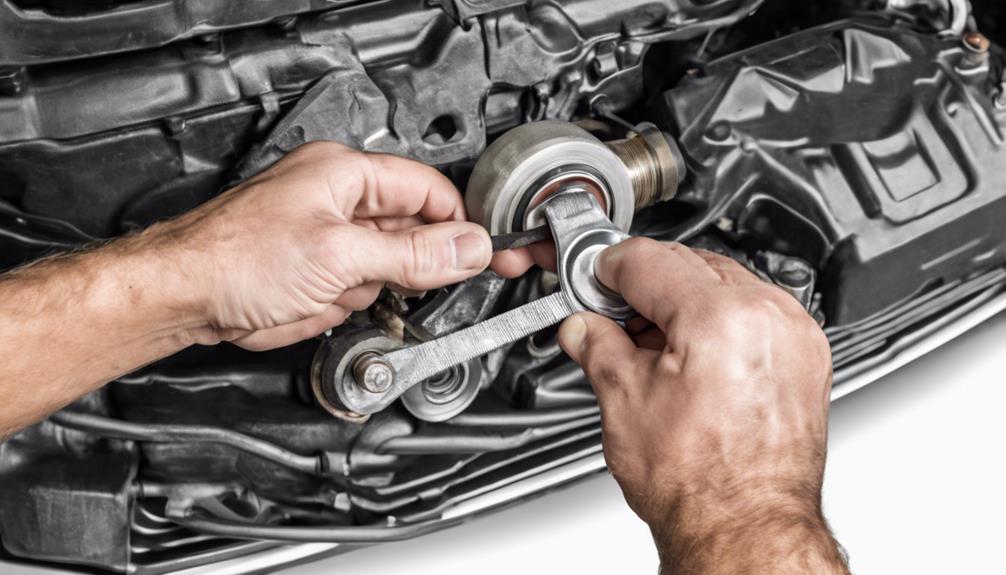
Adjusting the drive belt tensioner is essential for maintaining peak performance and preventing potential damage to the engine. Proper tension guarantees that the belt operates efficiently, optimizing engine performance and longevity. When the tension is too loose, slippage can occur, causing the belt to wear prematurely and affecting the overall performance of the engine. On the other hand, excessive tension can put strain on the components, leading to increased wear and possible failure.
To guarantee belt longevity and peak engine performance, it's vital to adjust the tensioner according to the manufacturer's specifications. This adjustment should be part of routine maintenance to secure that the belt operates smoothly and effectively. Regularly checking and adjusting the drive belt tensioner won't only extend the life of the belt but also enhance the performance of the engine, providing you with a reliable and efficient driving experience.
Signs of Incorrect Tensioner Adjustment
Improper drive belt tensioner adjustment can manifest in various signs that indicate potential issues with engine performance and belt longevity. When the tensioner isn't correctly adjusted, it can lead to symptoms that have significant consequences for your vehicle's operation.
Keep an eye out for the following signs:
- Squealing Noise: A high-pitched squealing noise coming from the engine area when the vehicle is running can be a clear indication of incorrect tensioner adjustment. This noise usually occurs due to excessive friction between the belt and pulleys.
- Belt Wear: Inspect the drive belt regularly for signs of wear. If you notice fraying, cracks, or glazing on the belt, it could be a result of improper tensioner adjustment causing uneven pressure distribution.
- Accessory Malfunction: Incorrect tensioner adjustment can lead to accessories like the alternator, power steering pump, or water pump not functioning correctly. This can cause various issues such as electrical problems, difficulty steering, or engine overheating.
Being vigilant and addressing these symptoms promptly can help prevent further damage to your vehicle and ensure peak performance.
DIY Steps for Tensioner Adjustment
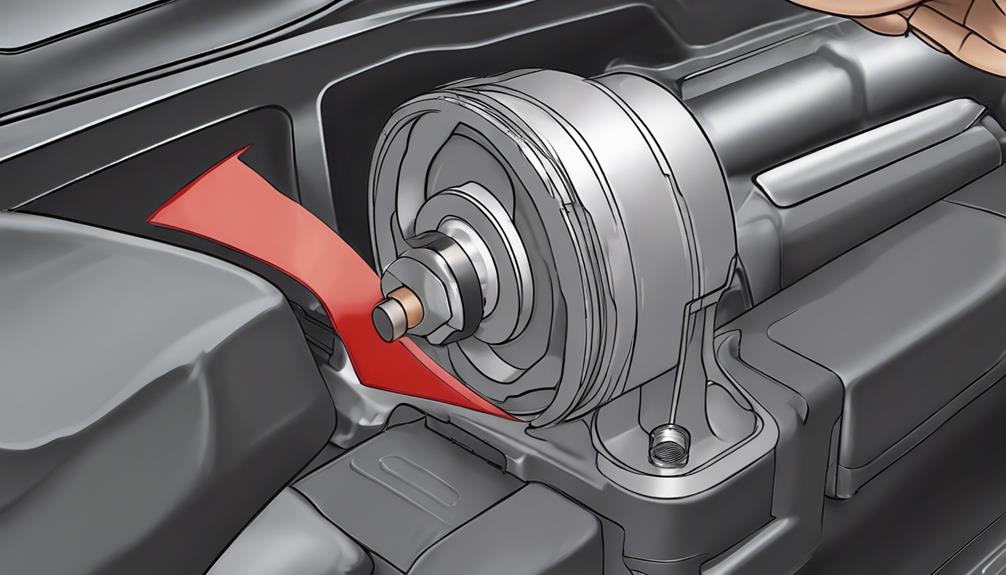
To guarantee proper functioning of your vehicle's drive belt system, precise adjustment of the tensioner is essential. When adjusting the tensioner yourself, you must make sure you have the necessary tool requirements. Commonly, you'll need a socket wrench or a special tensioner tool depending on your vehicle's make and model.
Safety precautions are paramount during this process. Before beginning, make certain the engine is turned off, and the key is removed from the ignition. Make certain the engine has cooled down to prevent burns. Additionally, wear safety goggles to protect your eyes from any debris that may dislodge during the adjustment.
When working near a running engine, be cautious of moving parts, such as the cooling fan. Following these safety measures will help prevent accidents and injuries while adjusting the tensioner. Remember, your safety is a top priority when performing any maintenance on your vehicle.
Benefits of Proper Tensioner Adjustment
Correct tensioner adjustment guarantees top performance and longevity of your vehicle's drive belt system. When the tensioner is properly adjusted, you can enjoy several advantages that contribute to the overall efficiency of your vehicle:
- Best Power Transmission: Proper tension ensures that the drive belt effectively transfers power from the engine to various components, such as the alternator and water pump, without slippage. This results in improved overall performance.
- Reduced Wear and Tear: By maintaining the right tension, you minimize unnecessary strain on the drive belt and other connected parts. This helps in reducing wear and tear on components, prolonging their lifespan and saving you from costly repairs.
- Improved Fuel Efficiency: A well-adjusted tensioner ensures that the drive belt operates smoothly, reducing energy losses and improving fuel efficiency. This means you get more mileage out of every drop of fuel, saving you money in the long run.
Ensuring proper tensioner adjustment provides these performance enhancements, making it a critical aspect of maintaining your vehicle's drive belt system.
Frequency of Tensioner Maintenance
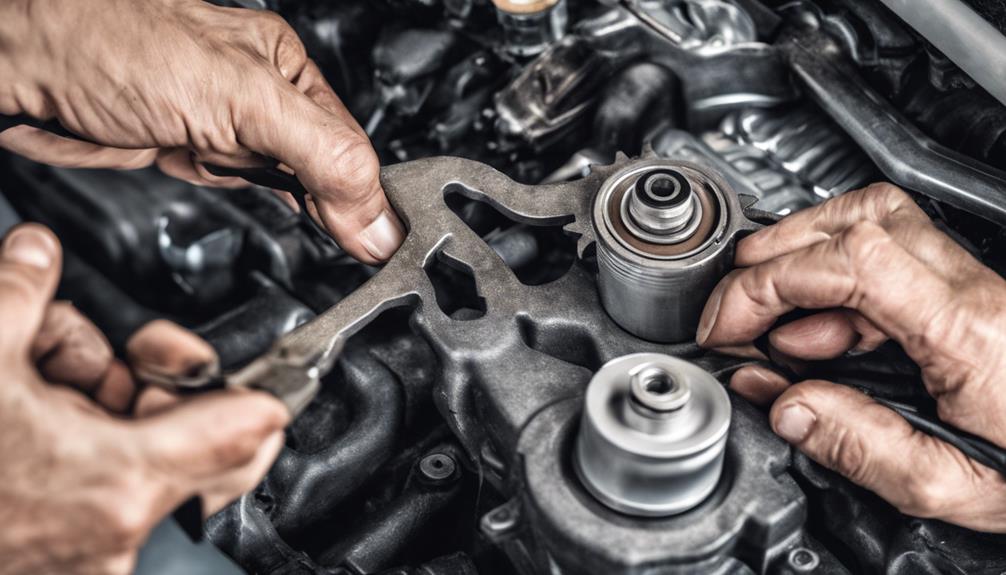
For optimum performance and longevity of your vehicle's drive belt system, maintaining the appropriate tensioner adjustment is crucial. Regular maintenance of the tensioner ensures that the drive belt functions smoothly and efficiently, preventing premature wear and tear on the belt and other components. To help you understand the importance of maintaining your tensioner, let's look at a recommended maintenance schedule along with the typical tensioner lifespan:
| Maintenance Task | Frequency |
|---|---|
| Tensioner Inspection | Every 12,000 miles |
| Tensioner Adjustment | Every 24,000 miles |
| Belt Replacement | Every 50,000 miles |
| Tensioner Replacement | Every 100,000 miles |
Frequently Asked Questions
Can a Drive Belt Tensioner Be Adjusted Without Replacing the Entire Tensioner Assembly?
Yes, you can adjust a drive belt tensioner without replacing the entire assembly. Utilize proper adjusting techniques to guarantee correct tension. Regular maintenance tips include checking for wear or damage and adjusting tension as needed to prevent belt slippage.
Are There Different Types of Drive Belt Tensioners for Different Vehicle Models?
Yes, there are different tensioner designs for various vehicle models, ensuring compatibility. These variations cater to specific belt configurations, engine layouts, and sizes. Understanding these differences is important for proper maintenance and efficient operation of your vehicle.
How Do I Know if My Drive Belt Tensioner Is Causing Other Issues in My Vehicle?
If you suspect drive belt maintenance issues, watch for symptoms of tensioner problems like squealing or vibration. To diagnose, check for vehicle performance issues. Addressing drive belt tensioner promptly can prevent further complications.
Is It Possible to Over-Tighten a Drive Belt Tensioner, and What Are the Consequences of Doing So?
You can over-tighten a drive belt tensioner, causing potential damage to the belt, pulleys, and other components. This can lead to premature wear, increased friction, and ultimately result in belt failure or system malfunctions.
Are There Any Common Mistakes to Avoid When Adjusting the Drive Belt Tensioner?
When adjusting the drive belt tensioner, common mistakes to avoid include improper alignment, incorrect tension levels, and overlooking wear signs. To validate proper technique, follow manufacturer guidelines, use the right tools, and conduct regular inspections.
Conclusion
In summary, ensuring proper adjustment of the drive belt tensioner is vital for optimal engine performance.
Did you know that over 70% of drive belt failures are due to improper tension?
By following the DIY steps for tensioner adjustment and maintaining the correct tension, you can prevent costly repairs and ensure smooth operation of your vehicle.
Remember, regular maintenance of the drive belt tensioner is key to avoiding potential issues down the road.

